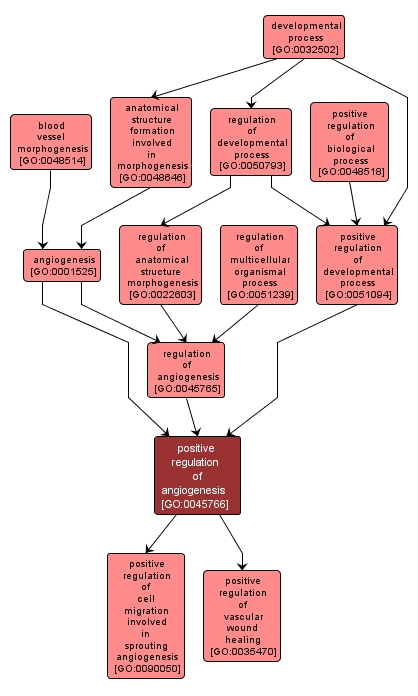GO TERM SUMMARY
|
| Name: |
positive regulation of angiogenesis |
| Acc: |
GO:0045766 |
| Aspect: |
Biological Process |
| Desc: |
Any process that activates or increases angiogenesis. |
Synonyms:
- stimulation of angiogenesis
- upregulation of angiogenesis
- up-regulation of angiogenesis
- activation of angiogenesis
- up regulation of angiogenesis
|
|

|
INTERACTIVE GO GRAPH
|














